The three phase rotation tester has the functions of live wire inspection, simple power inspection, circuit breaker search, breakpoint location, and line maintenance. The sound and light simultaneously indicate the forward or reverse phase sequence of the three-phase power supply, which is a portable tool that operators are handy to use.
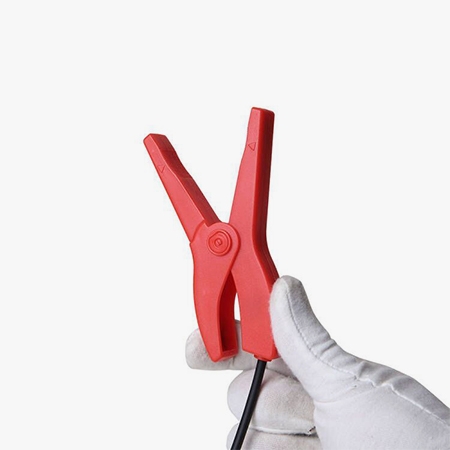
Accurate Detection
- Non-contact phase detector, can detect AC 70~1000V.
- 4 phase detection lights, equipped with buzzer function.
- Test lead connected to test pen, yellow corresponds to L1, green corresponds to L2, red corresponds to L3.

Easy to Operate
- 9V battery can be used continuously for about 70 hours.
- The clamp lead is 0.6m long, and the tested wire is in the center of the jaws.
- PC material shell, with CAT III 600V safety rating, safe and durable.
Applications
The application scenarios of phase sequence meters are very wide, covering multiple fields from basic power system debugging to complex industrial control systems. It has a wide range of applications in multiple fields. It not only ensures the correct operation of the equipment but also improves the safety and efficiency of the system. With the continuous advancement of technology, the functions of the phase sequence meter will be more diversified in the future, and its application in various fields will become more popular and important.
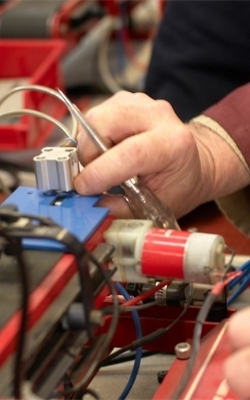
Equipment Maintenance
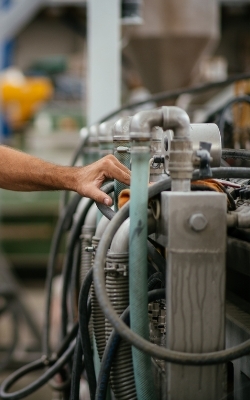
Factory Area
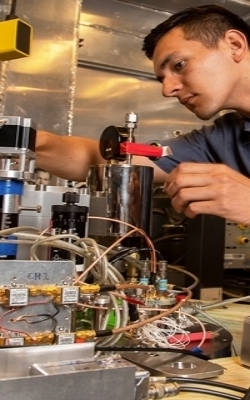
Teaching Experience
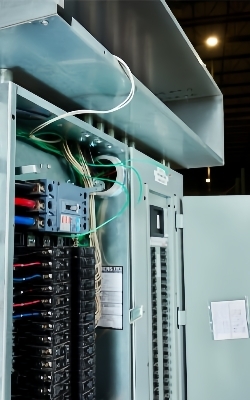
Electrician Field
| Model | SISCO-PRM-FR2060 |
| AC Voltage | 70~1000V |
| Test Frequency | 50Hz/60Hz automatic identification |
| Max.Rated Power | 300mVA |
| Power Supply | 9V battery |
| Clampable Wire Size | Outer diameter ∅1.5mm~ ∅48mm |
| Dimensions | 117.6mm×81mm×25mm |
| Test Cable Length | 60cm |
| Insulating Strength | 3.7kVrms |
| Working Temperature and Humidity | -10C~55℃, below 80% rh |
| Storage Temperature and Humidity | -20C~60℃, below 90% rh |
| Weight | 260g |
Structure Diagram
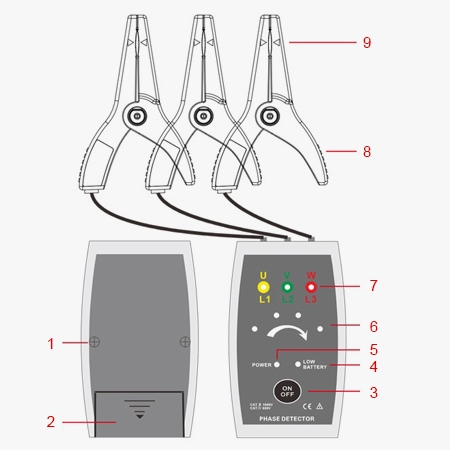
- Upper and Lower Cover Screws
- Battery Cover
- On/Off Button
- Battery Voltage Low Indicator
- Power Indicator
- Phase Sequence Indicator×4
- Electricity Test Indicator
- Clamp Handle
- Clamp Lead Indicator
Q1: What factors can affect the phase rotation meter?
A1: The measurement accuracy and stability of the phase sequence meter may be affected by many factors. First, an unstable power supply or voltage that is too high or too low may cause deviations in the measurement results of the phase sequence meter. Secondly, circuit board aging, component damage, etc. may affect the normal operation of the phase sequence meter. In addition, sensor failure or damage will not be able to correctly detect the phase sequence information of the power supply. Of course, human errors in equipment settings or operating methods can also lead to measurement errors.
Q2: How does a phase rotation meter work?
A2: The working principle of the phase sequence meter is based on the detection and processing of three-phase voltage or current signals. It determines whether the phase sequence is correct by comparing the phase difference between the three-phase voltages. Common phase sequence detection algorithms include those based on zero-sequence detection and those based on positive and negative sequence components. When the phase sequence is correct, these algorithms will output corresponding signals to indicate that the phase sequence is correct; otherwise, they will indicate that the phase sequence is wrong.
Q3: What technical parameters should be paid attention to?
A3: The technical parameters of the phase sequence meter include but are not limited to input voltage range, power supply voltage, meter size, weight, ambient temperature, humidity, etc. These parameters are crucial for evaluating the performance and application scope of the phase sequence meter. In addition, the phase sequence meter must also have a certain insulation strength and anti-interference ability to adapt to different use environments and ensure the safety of operators.
Tips: What safety issues should be paid attention?
As a precision testing instrument, the phase rotation meter needs to strictly follow the relevant safety operating procedures before and after use to ensure the safety of the operator and the equipment. At the same time, regular inspection and maintenance are also the key to ensuring the normal operation of the phase sequencer.
Before using the 3 phase sequence meter, a series of safety checks must be carried out to ensure the safety of use and the integrity of the instrument. First, confirm that there is no obvious damage to the appearance of the phase sequencer, such as cracks, breakage, or deformation. Secondly, it is also important to ensure that all function keys of the electrical rotation meter can work normally, and indicator lights, buzzers, and other indicator devices are effective. In addition, an insulation resistance meter should be used to check the insulation performance of the phase sequencer to ensure that it can still be used safely in high-voltage environments.
During the use of the phase sequencer, the operator should wear insulating gloves, shoes, and necessary safety equipment, such as a helmet. There should also be a dedicated person to monitor the operation process and stop the operation immediately if any abnormality is found.
After the rotating phase sequence indicator is used, it should also be cleaned safely according to certain steps:
- Power off. Make sure that the phase indicator with the open phase checker is completely powered off and disconnected from the power supply before cleaning.
- Clean the surface. Use a clean cloth to gently wipe the surface of the phase sequencer to remove dust and stains.
- Store the phase sequence indicator meter in a dry, cool place, away from sunlight and moisture.
- If disposable batteries are used, they should be removed and properly disposed of to avoid environmental pollution.
Thank you for buying industrial test and measurement equipment on SISCO.com, all products sold by SISCO and the partner cover a 12 months warranty, effective from the date of receiving the products.
What is covered?
SISCO is responsible for providing free spare parts, and free technical support to assist the customer to repair the defective products until the problem is solved.
What is not covered?
- Product purchased from anyone other than a SISCO store or a SISCO authorized reseller.
- Expendable parts.
- Routine cleaning or normal cosmetic and mechanical wear.
- Damage from misuse, abuse or neglect.
- Damage from use of parts other than SISCO approved.
- Damage from use outside the product’s usage or storage parameters.
- Damage from use of parts not sold by SISCO.
- Damage from modification or incorporation into other products.
- Damage from repair or replacement of warranted parts by a service provider other than a SISCO authorized service provider.
- Damage caused by the application environment not meeting the product usage requirements and the failure to perform preventive maintenance.

